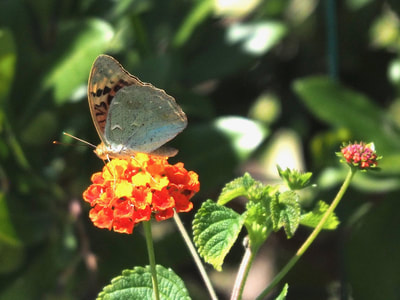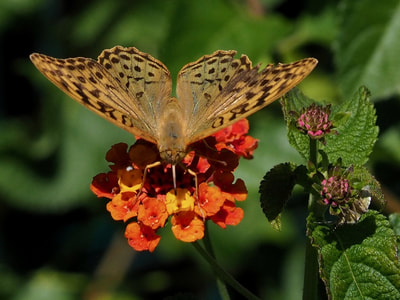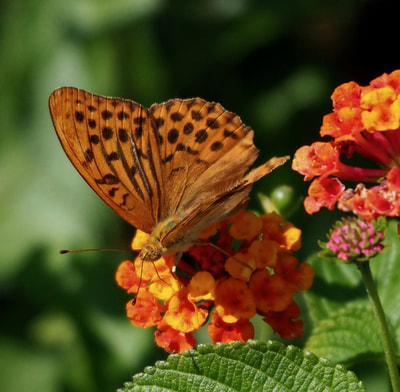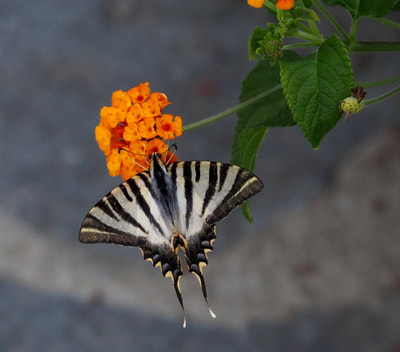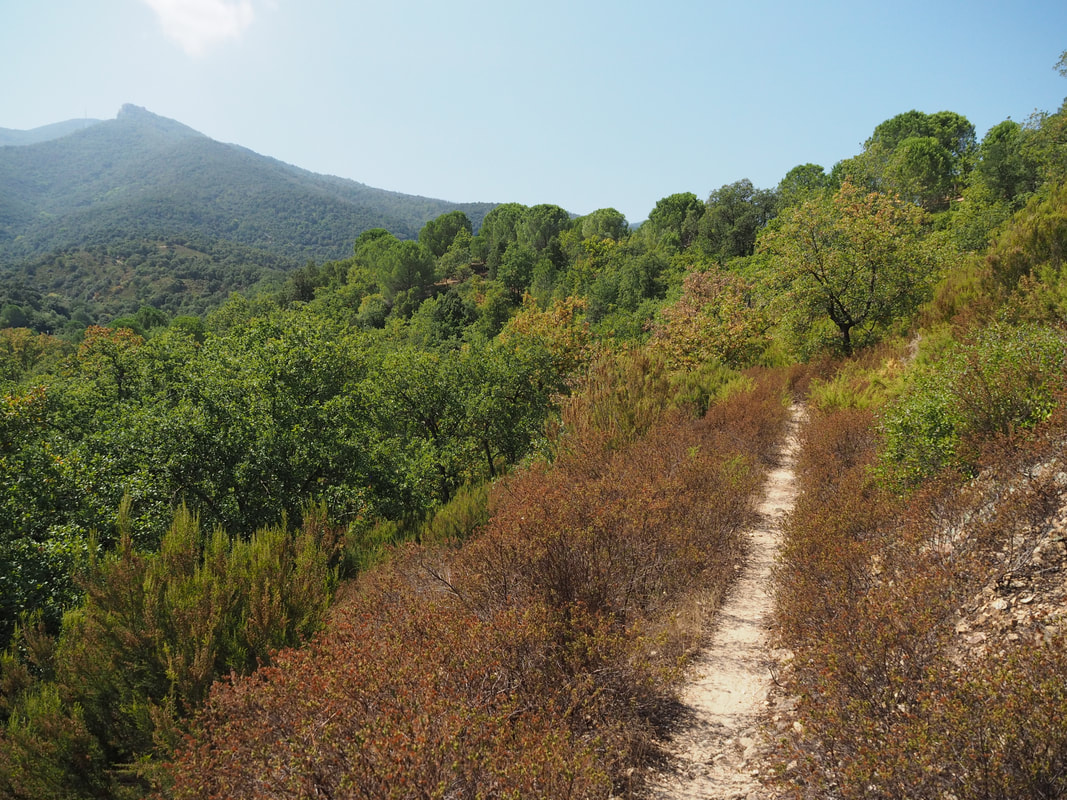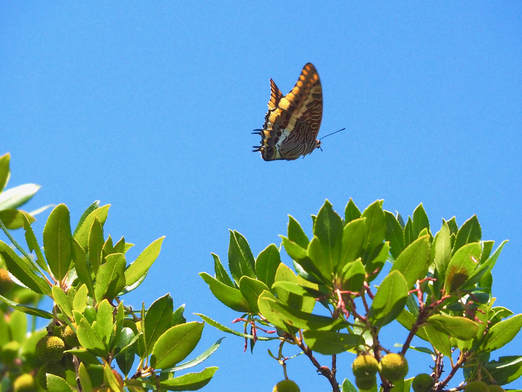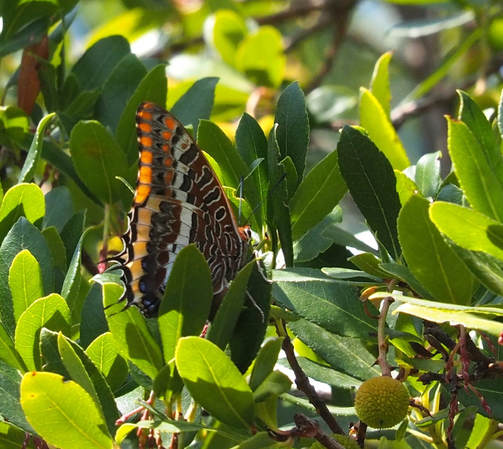You know it's August when the lawn crunches under your feet. Brown-going-on-white, it's tinder dry, like most of the countryside around. You know it's August when you hear sirens of fire engines racing to tackle another small wildfire. More often than not the blazes are started by unthinking or uncaring people who toss cigarette ends from their cars. You know it's August when you can't bear to to stand in the sun for more than a few minutes, and if a southerly wind is blowing it feels like you're in a fan oven. This is the month when the population of my village trebles, thousands of tourists migrate to the Med, and I take refuge indoors or in the garden.
August sometimes has surprises in store, however. Its first week this year was unpleasantly humid, with some hot southerlies or easterlies that made it feel like 38 degrees in the shade. The second week brought a chilly tramontane, which crashed the temperature to below 20 for several days, and spits and spots of rain fell as snow on Canigou. I don't remember seeing fresh snow up there in August before.
While I selfishly welcomed the freshness, some creatures were suffering. The GOR reported several bodies of house martins and swallows being found beneath nests. I can only presume this is due to the sudden scarcity of food. Too few insects flying. For sure, we didn't have many bees in the garden at that time. They are usually much more active when the sun is out - perhaps because sunshine triggers flowers to release pollen, which in turn attracts the pollinators?
Temperatures began rising again this last weekend, and everything seems to be returning to 'normal'. Swallows have been swooping to drink from our pool, bees are in abundance, and there seem to be more butterflies around, which the cold spell can't have killed off.
On Sunday, around 11 o'clock, I was watering the bees' favourite salvia, which is prone to flopping in the heat if not frequently hydrated, when I saw several big butterflies on a lantana across the garden. Some kind of fritillaries - probably silver washed, I decided. As I walked back to the outside tap, I nearly dropped the watering can when an even bigger butterfly glided into view. A two-tailed pasha! It was heading straight for my neighbour's strawberry tree, which stands against the wire fence, just above my lantana. Praying it might stay put for a while if it was laying eggs in the tree, I dashed for my camera.
After fumbling with the lens cap and fiddling various settings, I stood there, poised ... Two fritillaries were still on the lantana, a swallowtail flew past and, to my amazement, the pasha was also there. In truth it was here, there and everywhere, never settling for more than a few seconds. My camera never caught up with it. I felt sure patience would pay off, but the fritillaries conspired against me by harrassing it and eventually chasing it away. I had no idea that butterflies mob one another - the way small birds sometimes mob raptors. Their behaviour seemed particularly mean, considering the pasha had no interest in the lantana and they had no interest in the strawberry tree.
I had to settle for photographing them instead. Good thing too, because on checking the photos later, I discovered they were cardinals (the largest of the fritillaries), not silver washed. This is the first time I've seen cardinals in the garden - unless I've always mistaken their identity of course!
After that I sat in the shade of the pergola, waiting for the pasha to return, but it never did. The other butterflies disappeared too, perhaps because by then it was too hot for them as well. But other insects were around. An Asian hornet inspected the grapes above me in the pergola, and chased a carpenter bee. When the bee plummeted, I lost sight of them but heard the thunk as they hit a pot. Seconds later, the bee flew off, unscathed. A pair of palm moths was doing circuits and bumps - resting on eleagnus and cordyline in between flights. A hornet considered one of those on the wing too, but had second thoughts. Probably wise, it was like a spitfire buzzing a Vulcan bomber. Lots of "gingers" and "humbugs" among the bees on the sage flowers. The gingers are my favourites, the humbugs make me smile. Times like these become a kind of meditation.
Yesterday a silver washed did visit, so I was able to photograph it to compare with the cardinal. Both are in the photos below (cardinal left, silver washed right), along with a scarce swallowtail that was enjoying the same flowers earlier in the month.
Click on photos for larger image.
I've always called this spot The Park because it would make a great picnic place for families. It looks as though it was once a small arboretum, which failed either through neglect or vandalism. Last year, Sorède's community finally installed picnic tables, and turned it into an outdoor fitness area complete with exercise equipment (well bolted to the ground). At the top, where I used to sit and gaze across the Roussillon plain to Canigou, they built a solar 'oven' - a replica of the original that was built in the hills above the chapelle Notre Dame du château.
Because Mas del Ca is just the other side of the road from a retirement home, the west side is strimmed in the summer, for fire prevention reasons. All the grass is now unattractively brown and shaved, just like our lawn. On the east side, above the River Tassio, there are more trees and, so far, the heather, gorse and rock-roses haven't been cut. The rock-roses have been crisped up by the sun instead. No flowering plants in sight anywhere, which is no surprise for August.
On arrival there was no obvious butterfly activity. I waited. In the full glare of the sun it was painfully bright as well as sizzling hot. A few dragonflies passed me. A flock of bee eaters flew high overhead, heading south. And I waited. Gulped down half a litre of water. Wondered how long I should wait.
At last, a pasha turned up. And another. At least two!
As flighty as the one in my garden, in a continual dance, they barely paused long enough on leaf or twig before they were off again. Then they would disappear as suddenly as they arrived. After a while I would catch sight of a shadow, birdlike, on the path. When I followed that, I found the butterfly. Related to emperors, admirals, peacocks and tortoiseshells, the pasha must be the biggest of all the species we get here. Glimpsed out of the corner of the eye, it could easily be mistaken for a small bird.
They rarely settled on any outer leaves, much preferring the dark interior, but I felt sure it was only a matter of time before one would stop right in front of me and stay still long enough for me to take a photo. You have to be optimistic in this game.
After forty-five minutes my calves were burning and I was beginning to feel sick. The butterflies had been absent for some time - overcome by the heat too? - so I reluctantly headed back to the car. Once home, I sifted through umpteen pictures of leaves, berries and sky, to find one that included a recognisable pasha. I recorded that as a good start.
Today I returned, an hour earlier and with twice as much water. It was gone midday before one put in an appearance, fluttered around leaves right in front of me as if trying to find the perfect spot, and finally settled. Just for a couple of seconds.
